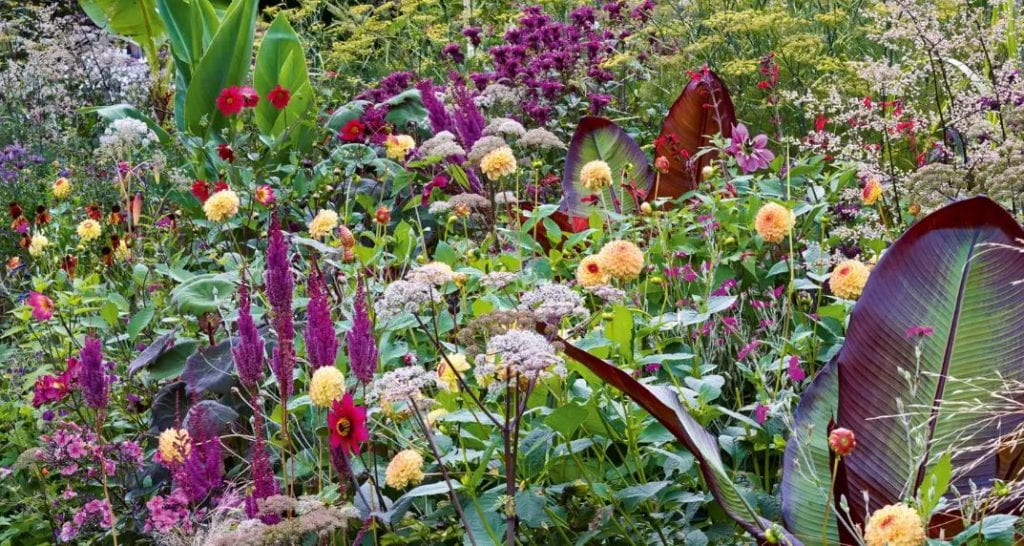A Beautiful Obsession by Jimi Blake and Noel Kingsbury

All books that are about individual gardens are promotional material for the garden, chock full of atmospheric photos of the planting and quite often key plants and this book is no different in that respect. What it is also selling is Jimi himself with a chapter on his life which is not out of place because the garden is very personal to him, from the naming of the different parts to the planting philosophy. What this does mean is that the garden is distinctive and different.
The chapters that were of particular interest to me were the ones about his planting philosophy and then how the various gardens differ from each other.
As the book says, Huntigdon is a plantsman’s garden filled with a wide range of new plants, an emphasis on foliage and colour and is also what we might call high maintenance with busy planting and removing times in May and October. Jimi uses a lot of annuals and tender plants and this is undeniably labour intensive if not as the books says Victorian. What it means is constantly changing borders full of colour. The garden does not have shrubby plants which are considered to be a bit blobby and not much fun after flowering, but uses ‘woody’ plants from the Araliaceae family which tend to be single stemmed giving a strong shape but not casting much shade. This is a new range of plants to me.
Another feature of the garden is the way summer is extended with the planting of salvias playing a key role. As Blake says, he has tried 256 species and cultivars and is gradually reducing this number to the ones he thinks work well with perennials. He recommends pruning them to keep them compact and not planting them with manure or fertiliser, just well-drained soil to encourage flowering and he dead heads them. Something I might need to start doing. There are then lists of salvias which do well in the garden and with other plants, the only one of which I grow is Salvia ‘Amistad’. There are also dahlias and here I do have quite a few of these although Blake grows mostly singles and collects and sows the seeds from them. It does mean a range of slightly different colours in the plants but these can be quite effective planted amongst the range of annuals and perennials.
The book then goes on to explore the different gardens in more detail and ends with a plant list. For me, the benefit of this book is the range of different plants that are showcased and that might be suitable for my garden.